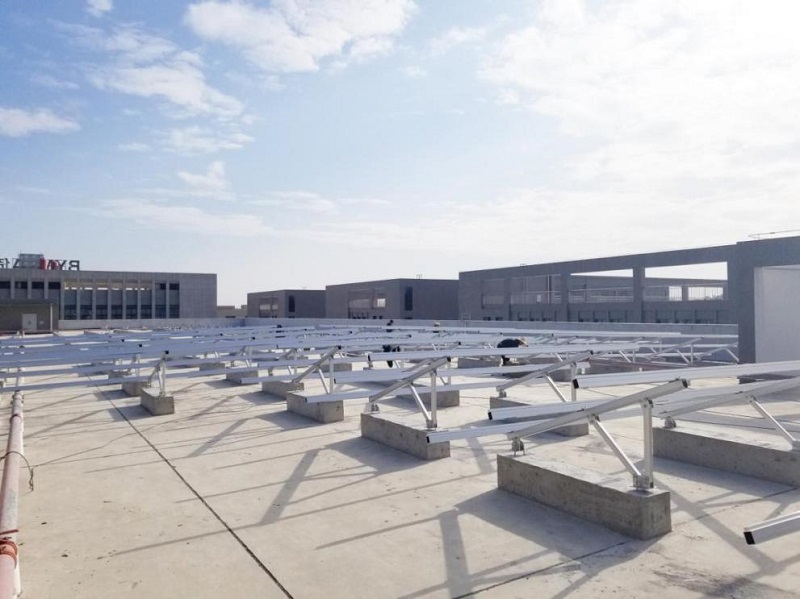
The Cement Roof Solar Mounting System is a structural system for mounting solar photovoltaic (PV) modules on a cement roof. It provides a stable and secure platform for mounting PV modules on concrete roofs in order to utilize solar power.
Cement roof photovoltaic racking systems typically consist of the following components:
Mounting Structure: The solar mounting structure is the main frame that supports and secures the PV module. It is usually made of corrosion-resistant and high-strength materials, such as steel or aluminum alloy. The racking structure should be designed according to the shape and slope of the roof, taking into account the roof's load-bearing capacity and wind requirements.
Mounting system: Cement roof PV bracket systems should be mounted in a non-invasive manner to avoid damage to the roof structure. Heavy-duty brackets are usually used and secured through the use of cement blocks or heavy objects to ensure the stability and safety of the racking system.
Adjustment Mechanism: In order to achieve optimal solar energy collection efficiency, mounting systems usually have a slope and angle adjustment mechanism. This allows the PV modules to be adjusted to the optimal tilt angle according to the slope and azimuth of the concrete roof to maximize the solar radiation received.
Waterproofing measures: As the concrete roof needs to remain watertight, waterproofing measures should be considered in the design of the racking system. Use a waterproof mat or sealing material to ensure that the connection between the PV racking and the cement roof is sealed to prevent moisture penetration.
This is the most common way of installing cement flat roof - pouring cement piers on the cement roof, the advantage of this way is that it does not damage the waterproof structure of the roof at all, and it is also very solid, and it can fully cope with 12-14 level of wind in terms of wind resistance; however, the cement piers are more complicated during the installation process, firstly, it requires a lot of manual Operation, and secondly, the curing and maintenance time of the cement pier is also very long, generally at least one week or more time.